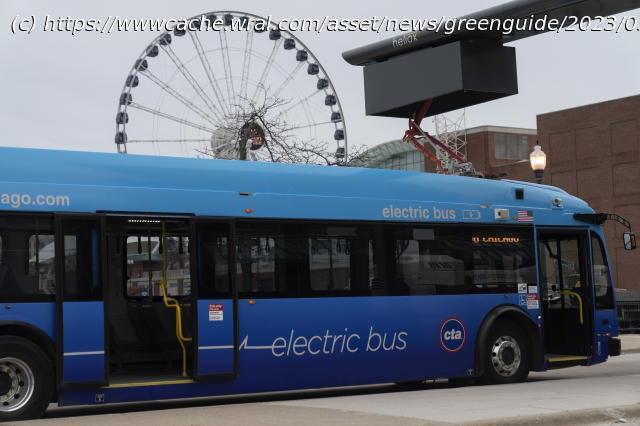CHICAGO (AP) — The No. 66 bus is packed on a recent weekday afternoon as it starts and stops its way from Chicago’s near west side to Navy Pier along the Lake Michigan shore.
CHICAGO The No. 66 bus is packed on a recent weekday afternoon as it starts and stops its way from Chicago’s near west side to Navy Pier along the Lake Michigan shore.
The seats and windows squeak and rattle just like a regular diesel bus, but no one seems to notice the high-pitched whine of the electric motor that makes it go.
That’s just what Chicago Transit Authority wants. Buses that don’t pollute the air yet can run the route with the same reliability as those that do, even when cold weather cuts into the battery range.
Yet to make electric buses work, the CTA has had to go to great lengths and expense. It built fast-charging sites on both ends of the No. 66 route that plug into the bus rooftops.
Drivers constantly monitor the batteries to make sure they don’t get depleted, risking the bus getting stranded. If they get below 50% charge, they’re supposed to top them off at a charger.
“We’re working through the day-to-day challenges of inclement weather in Chicago,” said Don Hargrove, senior maintenance manager at the garage that’s home to most of the authority’s 23 electric buses.
The CTA started experimenting with electric buses in 2014, and has developed a system that Hargrove says will work as the transit authority moves to an all-electric fleet by 2040.
Other transit systems are going through the same process to help cut pollution and fight climate change.
Cold weather is the CTA’s biggest problem. As the temperature drops, lithium-ion batteries that run the buses aren’t as efficient and lose range. Most of the energy drained from the batteries goes to keep the bus interior heated to 70 F (21 C).






